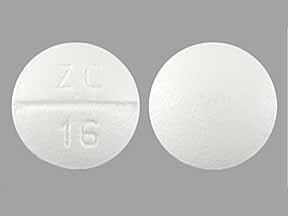Paroxetine Interactions
There are 510 drugs known to interact with paroxetine, along with 11 disease interactions, and 1 alcohol/food interaction. Of the total drug interactions, 106 are major, 388 are moderate, and 16 are minor.
- View all 510 medications that may interact with paroxetine
- View paroxetine alcohol/food interactions (1)
- View paroxetine disease interactions (11)
Most frequently checked interactions
View interaction reports for paroxetine and the medicines listed below.
- Abilify (aripiprazole)
- Adderall (amphetamine / dextroamphetamine)
- Advair Diskus (fluticasone / salmeterol)
- Aspir 81 (aspirin)
- Aspirin Low Strength (aspirin)
- Benadryl (diphenhydramine)
- Calcium 600 D (calcium / vitamin d)
- CoQ10 (ubiquinone)
- Crestor (rosuvastatin)
- Cymbalta (duloxetine)
- Eliquis (apixaban)
- Fish Oil (omega-3 polyunsaturated fatty acids)
- Lipitor (atorvastatin)
- Lyrica (pregabalin)
- Metoprolol Succinate ER (metoprolol)
- Metoprolol Tartrate (metoprolol)
- Nexium (esomeprazole)
- Norco (acetaminophen / hydrocodone)
- ProAir HFA (albuterol)
- Seroquel (quetiapine)
- Singulair (montelukast)
- Symbicort (budesonide / formoterol)
- Synthroid (levothyroxine)
- Tylenol (acetaminophen)
- Vitamin B12 (cyanocobalamin)
- Vitamin C (ascorbic acid)
- Vitamin D2 (ergocalciferol)
- Vitamin D3 (cholecalciferol)
- Xanax (alprazolam)
- Zyrtec (cetirizine)
Paroxetine alcohol/food interactions
There is 1 alcohol/food interaction with paroxetine.
Paroxetine disease interactions
There are 11 disease interactions with paroxetine which include:
- depression
- bone fractures
- renal dysfunction
- hyponatremia
- glaucoma
- liver disease
- mania
- platelet function
- seizure disorders
- SIADH
- weight loss
More about paroxetine
- paroxetine consumer information
- Compare alternatives
- Pricing & coupons
- Reviews (1,550)
- Drug images
- Side effects
- Dosage information
- Patient tips
- During pregnancy
- Support group
- Drug class: selective serotonin reuptake inhibitors
- Breastfeeding
- En español
Related treatment guides
Drug Interaction Classification
| Highly clinically significant. Avoid combinations; the risk of the interaction outweighs the benefit. | |
| Moderately clinically significant. Usually avoid combinations; use it only under special circumstances. | |
| Minimally clinically significant. Minimize risk; assess risk and consider an alternative drug, take steps to circumvent the interaction risk and/or institute a monitoring plan. | |
| No interaction information available. |
See also:
Vraylar
Vraylar is a once a day antipsychotic medication used to treat mental health or mood disorders ...
Lexapro
Lexapro is used to treat anxiety and major depressive disorder. Learn about side effects ...
Rexulti
Rexulti (brexpiprazole) is a prescription antipsychotic medication used in the treatment of major ...
Lorazepam
Lorazepam is in a group of drugs called benzodiazepines and is used to treat anxiety disorders ...
Venlafaxine
Venlafaxine is used to treat major depressive disorder, anxiety, and panic disorder. Learn about ...
Clonazepam
Clonazepam is used to treat seizures and panic disorder. Learn about side effects, interactions and ...
Buspirone
Buspirone is used to treat symptoms of anxiety, such as fear, tension, irritability and dizziness ...
Alprazolam
Alprazolam is used to treat anxiety disorders, panic disorders, and anxiety. Learn about side ...
Duloxetine
Duloxetine is a selective serotonin and norepinephrine reuptake inhibitor antidepressant used to ...
Escitalopram
Escitalopram is an SSRI antidepressant used to treat major depressive disorder in adults and teens ...
Further information
Always consult your healthcare provider to ensure the information displayed on this page applies to your personal circumstances.


